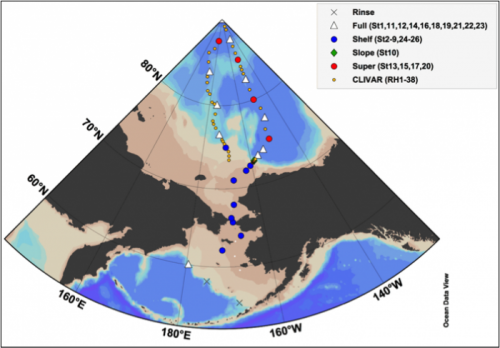TODAY'S JOURNAL:
In 2010 I had the incredible experience of being selected as a PolarTREC teacher. I participated in valuable training, met an inspirational cohort of other PolarTREC teachers, and sailed aboard the US Coast Guard Cutter Healy deep into the Arctic Ocean on the 2010 International Extended Continental Shelf Survey.
This past winter, I got one of the more amazing surprises in my life when I was selected to sail again aboard the Healy, this time on the 2015 US Arctic GEOTRACES cruise. The details of the mission will unfurl as my journal entries, photos, and videos are posted but this blurb from Chief Scientist David Kadko is a nice summary of what to expect:
“A team of 50 scientists, students, and technicians will embark on the U.S. Arctic GEOTRACES expedition this year, 9 August -15 October 2015, aboard the U.S. Coast Guard Cutter Healy. Established by the U.S. GEOTRACES Science Steering Committee, the U.S. Arctic GEOTRACES initiative will be part of an international, multiple icebreaker effort—provided by the United States, Canada and Germany—and will include scientists from several nations who will conduct geochemical sampling of the Arctic Ocean.”
For more details, click over to this article about the cruise.
 The U.S. Arctic GEOTRACES proposed cruise track. Image courtesy of GEOTRACES.
The U.S. Arctic GEOTRACES proposed cruise track. Image courtesy of GEOTRACES.
After phone interviews and many emails to line up travel details etc. I began my US Arctic GEOTRACES involvement by traveling to Healy’s home port in Seattle in mid-June. The science team shipped their gear here to load aboard and do as much setting up as possible before the Healy headed off on its first Arctic mission of the year, a study on oil spill technologies. We will rejoin the icebreaker in Dutch Harbor in the Aleutian Islands of Alaska on August 4 for final preparations and sail on August 9. The goal will be to get as far north as possible. Ideally we will try for the North Pole (ice conditions permitting) around the middle of September when Arctic ice is typically at its minimum extent.
Anyway, stay tuned for a few more journal entries detailing some of our preparations in Seattle, and then watch for daily entries whenever possible from our cruise August 9 - October 13!
These time lapses might give you a sense of how busy it can get when loading the USCGC Healy. In addition to the ship’s cranes (it has 5), a shore crane is also used to hoist gear aboard for setting up and stowing in anticipation of our cruise far into the Arctic Ocean.
GO DEEPER!
Watch the time-lapse video again, this time on YouTube's site (click the little YouTube icon in the lower right of the viewer.) Then select 2x speed in the settings menu (the little gear symbol in the bottom of the video window.) In the second part, you should notice the Healy move in an interesting way. How do you explain the sinking and rising motion?
That’s all for now- Bill Schmoker


Comments